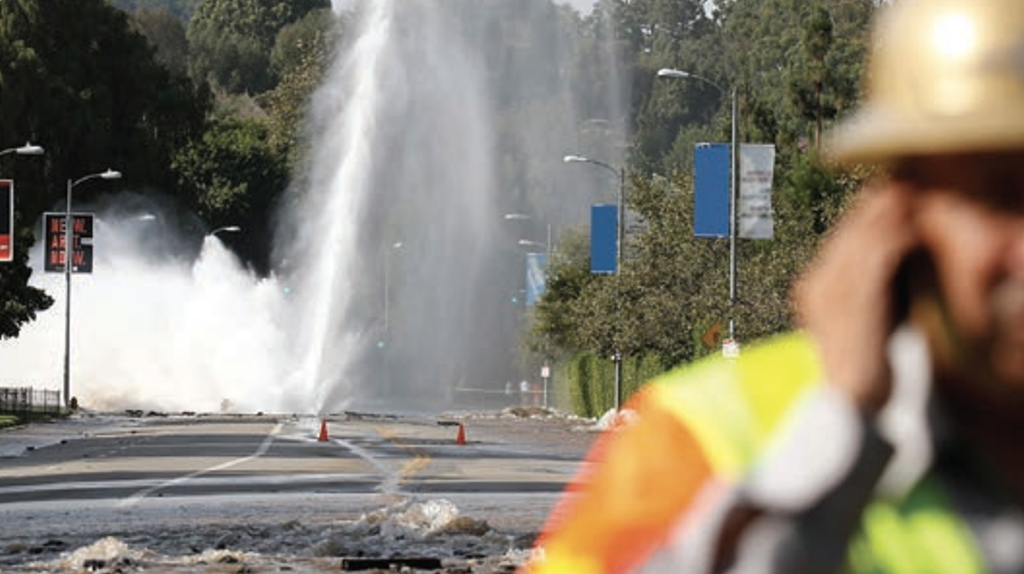Advancing Innovative Water Technologies
LVVWD deployed Mueller Water Products’ EchoShore®-TX permanent leak detection platform. The smart technology enabled LVVWD to better understand and manage the critical water supply pipeline and to reduce any potential water loss due to leakage. The monitoring platform combines proven acoustic leak detection technology with leading-edge AT&T wireless connectivity and visual end-user dashboards to create a cost-effective monitoring solution. In Las Vegas, 13 permanent acoustic sensors are monitoring 3 miles of the aging pipeline installed under Las Vegas Boulevard, from Sunset to Flamingo Roads.
“When this technology came along, it allowed us to think outside the box and say, really, the pipes don’t fail catastrophically all of a sudden. They fail by having a very small leak which developed to a larger leak which eventually develops into a sink hole. So by having this technology we’re allowed to monitor the pipe on a continuous basis to detect those small leaks before they get to be big leaks, and then be able to schedule an act and make repairs as needed. This allows us to extend the life of our pipes significantly by doing this,” said Charles Scott, LVVWD Engineering Project Manager.
The NIST water sustainability project incorporates AT&T wireless connectivity to collect, transmit and manage data from the EchoShore®-TX monitoring nodes. AT&T cellular wireless connectivity was selected as it’s secure, readily available and low cost for connecting Industrial Internet of Things like the sensor used in the EchoShore-TX system.
Aging water infrastructure challenges will continue to escalate as buried pipelines throughout the nation near the end of their useful life, resulting in water loss, inefficient use of energy and property
damage. Simply replacing or allowing these assets to run to failure is cost-prohibitive and not a sustainable infrastructure management approach. New pipeline monitoring technology combined with wireless communications and data visualization as demonstrated in the NIST Global City Teams Challenge are enabling utilities to cost-effectively gather more data to make more informed decisions that extend asset life and reduce operating risks.
This technology allows us to be proactive. It saves the Valley Water by detecting those leaks and being able to fix them before they go on for potentially years unnoticed.
Charles Scott
LVVWD Engineering Project Manager
These case studies are property of Mueller Co., LLC. For more information about Mueller please visit www.muellerwp.com or call Mueller customer service at 800.423.1323.

